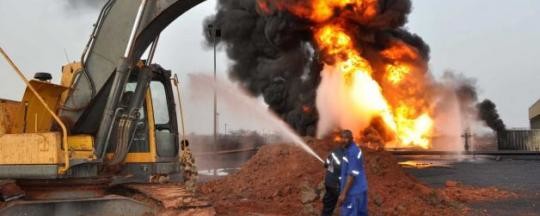This report is part of an exclusive series, ‘War Economy’, which focuses on the economic situation in South Sudan.
South Sudanese government officials have refused to disclose the level of foreign exchange reserves held by the Central Bank amid shortage of hard currency in the markets.
Foreign exchanges reserves are assets held by a central bank, often in the form of United States dollars, which the central bank can exchange for domestic currency with commercial banks and forex bureaus.
In South Sudan the fixed rate of exchange for the US dollar has remained the same while the black market rate dropped to a record low this month. Many businesses, commercial banks or forex bureaus have been facing an acute shortage of dollars.
In an interview earlier this week, a senior central bank official refused to comment on the level of foreign reserves, though questioned twice on the matter. Another official, an executive at the finance ministry, likewise declined to answer the question, while denying that the reserves were exhausted.
“There are reserves to support provision of basic needs and services. The central bank has been allocating money to commercial banks and forex bureaus operating in the country,” he said.
However, three more junior sources in several different institutions who claimed to have working knowledge of the matter all put the figure at less than $150 million.
Sources variously estimated the Central Bank’s foreign assets reserves at $110 million, $140 million and $120 million, equivalent to about a week or so of imports. None of these figures are official.
All of these estimates are less than a projection made by the International Monetary Fund (IMF) last December. The IMF projected that the net foreign assets of the central bank would drop to the equivalent of two weeks of imports in 2015.
‘Critically low’
The South Sudanese central bank’s foreign currency reserves late last year were disclosed in a report published by the IMF, an international organization headquartered in Washington, DC. Data on the reserve levels since then is not publicly available.
The IMF Representative in Juba reported on 15 December, “At end-November 2014, the net foreign assets of the central bank amounted to US$340 million (less than 3-weeks of imports), compared to US$379 million at end-September.”
This means that the central bank’s foreign reserves dropped 10% over a two month period from end-September to end-November. Without data available, it is not possible to say whether the reserves continued to decline at the same precipitous rate since then.
At the time, the IMF’s office in Juba already called this level of foreign exchange reserves “critically low.” It recommended that South Sudan’s central bank build up a reserve at least eight times that level.
“In light of South Sudan’s vulnerabilities, it is estimated that a target for foreign reserves of 6-8 months of imports could be appropriate,” the IMF stated.
The Fund called the reserves shortage one of several “critical vulnerabilities” threatening the economic stability of the country. “The foreign exchange market is distorted, reserves buffers are critically low, [and] the fiscal deficit is growing,” IMF staff reported.
Stopping the bleeding
In a press note endorsing the findings of this report, the IMF Executive Board in Washington was even more blunt, saying that the official exchange rate of the South Sudanese pound to the US dollar is not “realistic” and should be adjusted to help restore “depleted reserve buffers”
The IMF Executives recommended, “Exchange rate unification would significantly reduce the fiscal imbalance [and] remove incentives for corruption… An adjustment in the exchange rate peg to a realistic level would also help stem foreign reserve losses.”
Ignoring this advice, the Central Bank has maintained the fixed exchange rate at the same level while the black market rate has risen sharply.
Meanwhile, a source speaking on condition of anonymity told Radio Tamazuj that the government is likely to continue to face cash flow problems in the near future owing to reduced revenues and high spending. He predicted it is a matter of weeks before no money will be available and he said that the government is approaching technical bankruptcy.
Another official said that he feared the possible consequences should the government fail to secure a $500 million loan that it has been seeking from the Qatari national bank.
File photo: A fire at the Heglig oil field in Sudan in 2012
Read more from the series ‘War Economy’:
South Sudan’s Lakes police paid 2 months late (27 March)
Bread price rises in South Sudan state capital (27 March)
South Sudan fiscal report delayed after Q1 overspend (27 March)
South Sudan denies printing more money (27 March)




